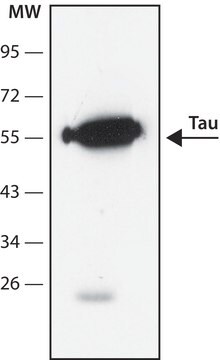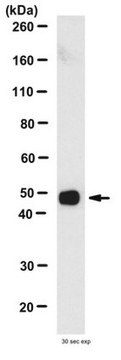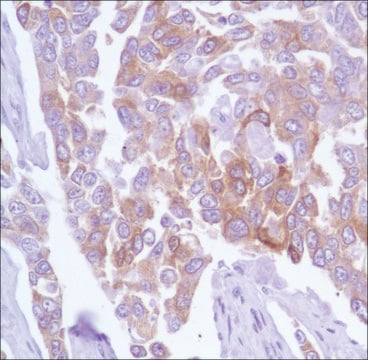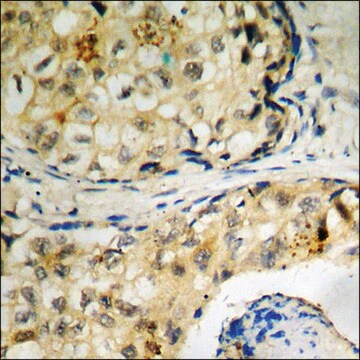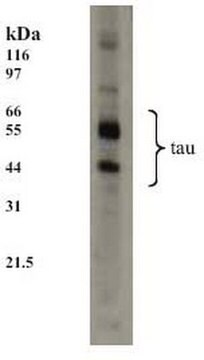ABN2178
Anti-Tau (TauC4 Antibody, 354-369)
serum, from rabbit
Sinonimo/i:
Microtubule-associated protein tau, Neurofibrillary tangle protein, Paired helical filament-tau, PHF-tau
About This Item
WB
western blot: suitable
Prodotti consigliati
Origine biologica
rabbit
Forma dell’anticorpo
serum
Tipo di anticorpo
primary antibodies
Clone
polyclonal
Reattività contro le specie
human
Reattività contro le specie (prevista in base all’omologia)
mouse (based on 100% sequence homology), rat (based on 100% sequence homology)
Confezionamento
antibody small pack of 25 μL
tecniche
electron microscopy: suitable
western blot: suitable
Isotipo
IgG
N° accesso NCBI
N° accesso UniProt
modifica post-traduzionali bersaglio
unmodified
Informazioni sul gene
human ... MAPT(4137)
mouse ... Mapt(17762)
rat ... Mapt(29477)
Descrizione generale
Specificità
Immunogeno
Applicazioni
Neuroscience
Electron Microscopy Analysis: A representative lot detected Tau (TauC4, 354-369) in Immunogold negative-stain Electron Microscopy applications (Fitzpatrick, A.W.P., et. al. (2017) Nature. 547(7662):185-190).
Qualità
Western Blotting Analysis: A 1:2,000 dilution of this antibody detected TauC4 region in full length recombinant human tau (human 4R1N).
Descrizione del bersaglio
Stato fisico
Stoccaggio e stabilità
Altre note
Esclusione di responsabilità
Non trovi il prodotto giusto?
Prova il nostro Motore di ricerca dei prodotti.
Certificati d'analisi (COA)
Cerca il Certificati d'analisi (COA) digitando il numero di lotto/batch corrispondente. I numeri di lotto o di batch sono stampati sull'etichetta dei prodotti dopo la parola ‘Lotto’ o ‘Batch’.
Possiedi già questo prodotto?
I documenti relativi ai prodotti acquistati recentemente sono disponibili nell’Archivio dei documenti.
Il team dei nostri ricercatori vanta grande esperienza in tutte le aree della ricerca quali Life Science, scienza dei materiali, sintesi chimica, cromatografia, discipline analitiche, ecc..
Contatta l'Assistenza Tecnica.
